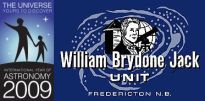You are here
Compound scopes
A telescope that uses a combination of mirrors and lenses to increase the effective focal length of the telescope while allowing it to be folded into a more convenient and compact size. The use of a full-aperture correcting lens in these scopes virtually eliminates spherical aberration, chromatic aberration, and coma. The word catadioptric is derived by combining the term for an optical system that forms images by using mirrors (catoptric) with the one for a system that uses lenses (dioptric). The most popular catadioptric designs are the Schmidt-Cassegrain and Maksutov-Cassegrain These telescopes are usually expensive scopes usually providing a lot of magnification in a smaller package. Becuase of the amount of glass and mirrors involved they are usually also heavy. They are usually fancier GoTo computerized mounted scopes and if someone has an observatory they are usually using one of these types of telescopes. The Schmidt-Cassegrain is a relatively new design that manages to catch the best of both worlds. It contains elements of both the reflector and the refractor. This design uses two mirrors to bounce the light up and down the tube and then through an opening in the back where the eyepiece is located. The front of the tube contains a glass lens known as the corrector plate. Light enters through the corrector plate where it strikes the primary mirror in the back of the tube. It is then reflected to a small secondary mirror attached to the front corrector plate. From there it is then reflected through a small hole in the back of the primary mirror. Because the light path is essentially folded in half, the tube is much shorter than it would be in a reflector of the same aperture size. Schmidt-Cassegrains have become increasingly popular with amateur astronomers because of their small tube size to aperture ratio. With their motorized fork mounts, these telescopes are ideal for astrophotography. They cost a little more than reflectors, but much less than a refractor of the same aperture size. These telescopes are popular in 8 and 10-inch apertures, and can be found as large as 14 inches. Many of the newer models have built-in computers that can locate objects by entering their coordinates onto a keypad. The Schmidt-Cassegrain is a great all-around performer for both planetary and deep-sky observing.
